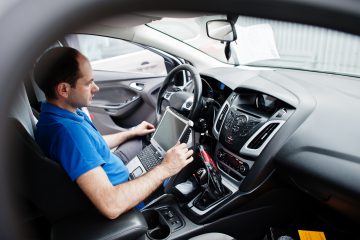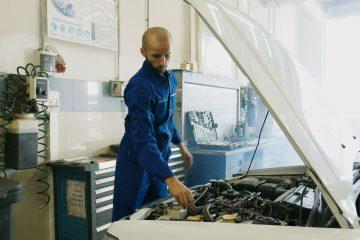One of the more frustrating things about making repairs to your car is when they don’t go quite correctly, and the car fails the first post-repair test drive. Any time you replace parts, you need to put the new parts in so that they fit and function the way your car came from the factory. For some parts, this is as simple as bolting them in and tightening them to the proper torque specification. I other cases, some parts, mainly electrical ones, need to be adapted to the car once installed.
In yet other cases, mechanical parts work in conjunction with fluids. As such, special care needs to be taken. A good example of this is replacing parts in your car’s cooling system. Generally, replacing a water pump or radiator isn’t all that difficult. Accessing your car’s heater core can be a challenge sometimes, but replacement is usually a simple matter of clamping off and removing hoses and the replacing the heater core itself. A water pump will unbolt from the engine block once the drive belt is off. A new pump, a new gasket, and some sealant, and you’re all set. While we’re at it, let’s not forget cooling system hoses. Nothing could be simpler – you loosen the hose clamps, replace the section of hose in question, and you’re done.
So, you have your cooling system repaired and solid. You open your radiator cap and fill the system with fresh coolant. The only thing to do now is to test drive the repair, right? So, you get out on the road, and everything seems okay… until the temperature gauge reaches its normal range, and then keeps going up. You pull the car over just before reaching a severe overheat. Why did this happen?
Chances are, you didn’t bleed the air out of the cooling system properly (or at all). Simply filling the radiator at the end of repairs isn’t enough. An air pocket trapped in the system can cause an overheat. These air pockets need to be eliminated. There are many tricks to accomplish this. But, for the most part, you’re going to want to raise the front of your car on ramps or jack stands, and then once your initial fill of the cooling system is done, start the engine. The water pump will circulate coolant through the system, eventually pushing out the air pockets. You’re going to want to keep plenty of coolant and a funnel on hand. Keep filling the system until the car is up to temperature and the thermostat opens. Stop your car and let it cool. If necessary, top up the coolant again. From there, you should be good to go, and shouldn’t need to worry about further overheating.



